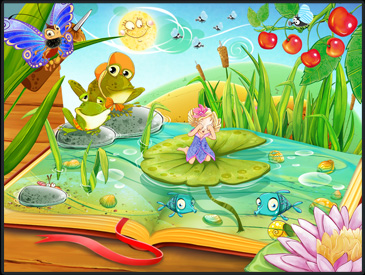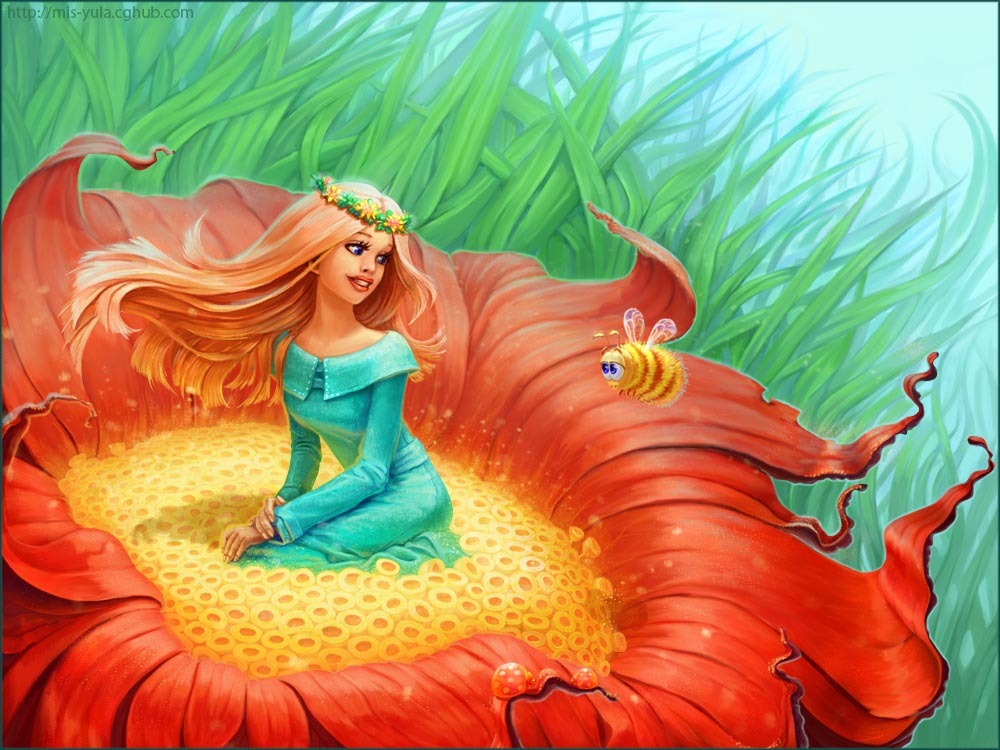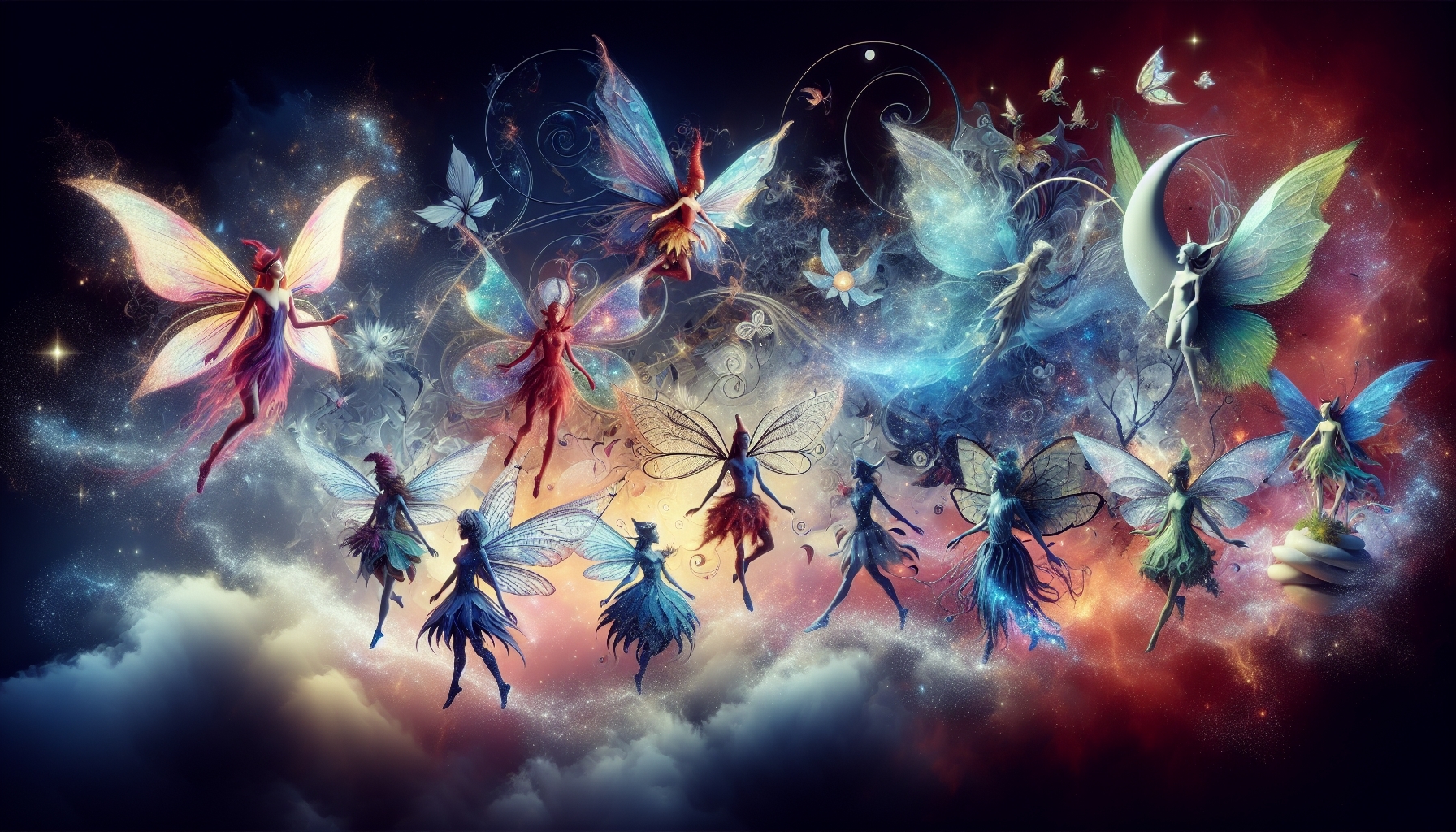Thumbelina

Thumbelina: A Tale of Courage, Compassion, and Self-Discovery in a Magical World
Introduction: A Thumb-Sized Wonder
Thumbelina, known as "Tommelise" in its original Danish form, is a fairy tale masterpiece by renowned author Hans Christian Andersen. Since its debut in 1835, this story has captured imaginations worldwide, proving that heroes come in all sizes.
Why is Thumbelina So Popular?
The tale’s enduring appeal lies in its relatability. Just like Spider-Man appeals to the teenager who feels like an underdog, or Cinderella to anyone who dreams of a better life, Thumbelina resonates with those who feel small or overlooked, but have big hearts and even bigger dreams.
The Tale of Thumbelina: A Deep Dive
Thumbelina’s story begins with a woman who longs for a child. A kind witch gives her a magical seed, and from the tulip that blooms emerges a tiny girl named Thumbelina. What follows is a roller-coaster ride full of trials and triumphs.
The Toad: Ugly and Greedy
The toad in The Story of Thumbelina is one of of the main characters. She is a representation of the constraints and the power that society has placed on women. Her plans to marry Thumbelina off to her unpleasant son, shows how powerful the prevalent parental demands are. The toad shows his ugliness and greed in the many experiences that female children must go through to survive during Andersen’s time.
The Mole, Flawed by the way he thinks:
A very smart person yet he is a flawed person in how he thinks. The mole is portrayed as a creature of intellect and sophistication. Unlike the toad, he isn't openly malevolent. He has a residence filled with things that show a life of comfort and knowledge. However, his smartness is flawed by his self-centered world-view and his lack of emotional feelings. The mole reads a lot and is well spoken' but fails to appreciate the true value of the world around, while dismissing the sun and the birds as irrelevant
Her Trials Begin
She gets kidnapped by a toad, carried away by a beetle, and almost ends up marrying a mole! But thanks to her intelligence, her resourcefulness, and a few helping hands (or wings) from friends like the swallow, she escapes each predicament. Ultimately, Thumbelina discovers a kingdom full of tiny people just like her and finds her happily ever after.
Thumbelina Why So Many Adaptations?
Why So Many Adaptations?

The story’s themes are so universal that it’s been adapted into everything from animated movies to ballets. This is the hallmark of a great story: it can be retold in countless ways while retaining its core essence. The fact that we’re still talking about Thumbelina nearly 200 years after its publication says a lot about its impact.
The Importance of Friendship
One angle often overlooked is the role of friendship in Thumbelina's journey. Thumbelina befriends various creatures like fish and birds, who help her in her time of need. It sends a message about the value of friendship and how good friends can come in unexpected forms and sizes.
The Historical Angle: 19th Century Europe
Thumbelina was written during an era when fairy tales weren't just bedtime stories; they were a powerful way to impart societal values and life lessons. They were like the comic books or blockbuster movies of today. Andersen used this medium effectively to address themes like courage, individuality, and self-respect, which were revolutionary during that time and remain relevant today.
A Story That Grows With You
The story can be read on multiple levels. For younger readers, it's a captivating tale of adventure and romance. For older readers, it might seem like an allegory for personal growth and self-discovery. Some even see it as a feminist critique, pointing out how Thumbelina has to navigate a world that consistently underestimates her because she's different and a female.

Life Lessons from Thumbelina: What Can We Learn?
Thumbelina’s tale teaches us the importance of courage, kindness, and perseverance. But it also teaches us to be cautious and intelligent, to understand when to fight and when to seek help. These are lessons that can help us in school, at work, and generally in life.
My Two Cents: A Personal Perspective
Thumbelina's story offers much more than magical escapism. I believe it serves as an enduring lesson on the virtues of courage, compassion, and resilience. It teaches us that even when we feel small and powerless in a big world, our actions and decisions can still make a big impact.
Final Thoughts: More Than Just a Fairy Tale
Thumbelina is not merely a children’s story. It’s a life story. It’s about facing the unknown, navigating difficult situations, and coming into your own. As you go through the challenges and joys of adolescence, let Thumbelina serve as a reminder that no matter how small you may feel at times, you’re capable of big things.

